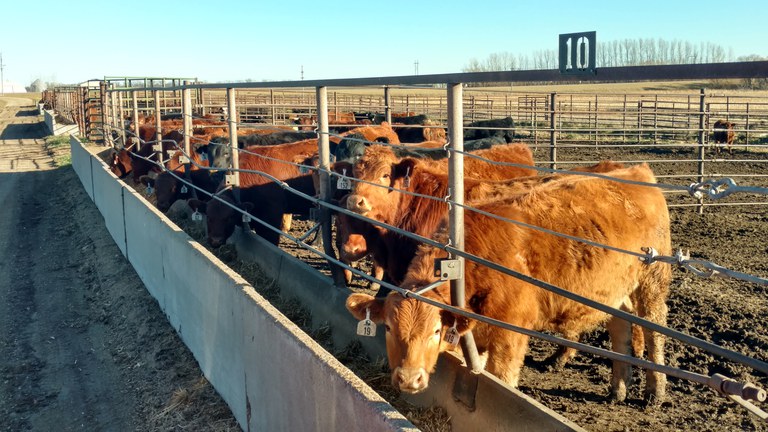Backgrounding Cattle - Average Daily Gain Goals
During last week’s backgrounding seminars held across North Dakota, the budgets that were provided supported higher average daily gains for more profitability. As average daily gain is increased the total cost per pound of gain decreased.
To watch a video taped session of the backgrounding seminars, please go to the following links:
- YouTube:
- Video 1: https://youtu.be/fPSw7zDfdqo
- Video 2: https://youtu.be/TdamrpUCW9c
- Facebook: https://www.facebook.com/NorthCentralREC/
However, there is always concern about calves getting too fleshy at higher rates of gain. Cattle buyers tend to discount fleshy calves that exhibit too much body fat or condition. Fleshy calves tend to have poorer subsequent feed yard performance.

A previous CREC Animal Scientist, Anna Taylor, conducted research at South Dakota State University looking at backgrounding rate of gain on carcass characteristics. Steer calves weighing an average of 697 pounds were backgrounded until they weighed an average of 878 pounds. The 3 rates of gain were 1) 3 pounds per day for 63 days, 2) 2.5 pounds per day for 79 days, and 3) 2 pounds per day for 93 days. Calves were fed a corn silage based diet and the targeted average daily gain (ADG) was achieved by limiting feed intake. At the end of each backgrounding treatment, calves were fed the same finishing ration and harvested at a common backfat thickness of 0.55 inches.
To reach a common back fat thickness, calves with a lower backgrounding rate of gain were fed for more days - 187, 201, and 221 days for 3, 2.5 and 2 pounds ADG respectively.
Calves performed better with increased ADG during the finishing period when the backgrounding ADG was lower. Hot carcass weights were also heavier when backgrounding ADG was lower.
In other words, when backgrounding calves at lower rates of gain, calves are set up to gain faster and go to heavier slaughter weights when feed to a consistent 0.55 inch backfat.
However, the researchers commented that marbling appears to be best when calves are not grown to slow or too fast and this data set identified 2.5 pounds ADG had better marbling scores.
Karl Hoppe, Ph. D.
Area Extension Specialist, Livestock Systems


